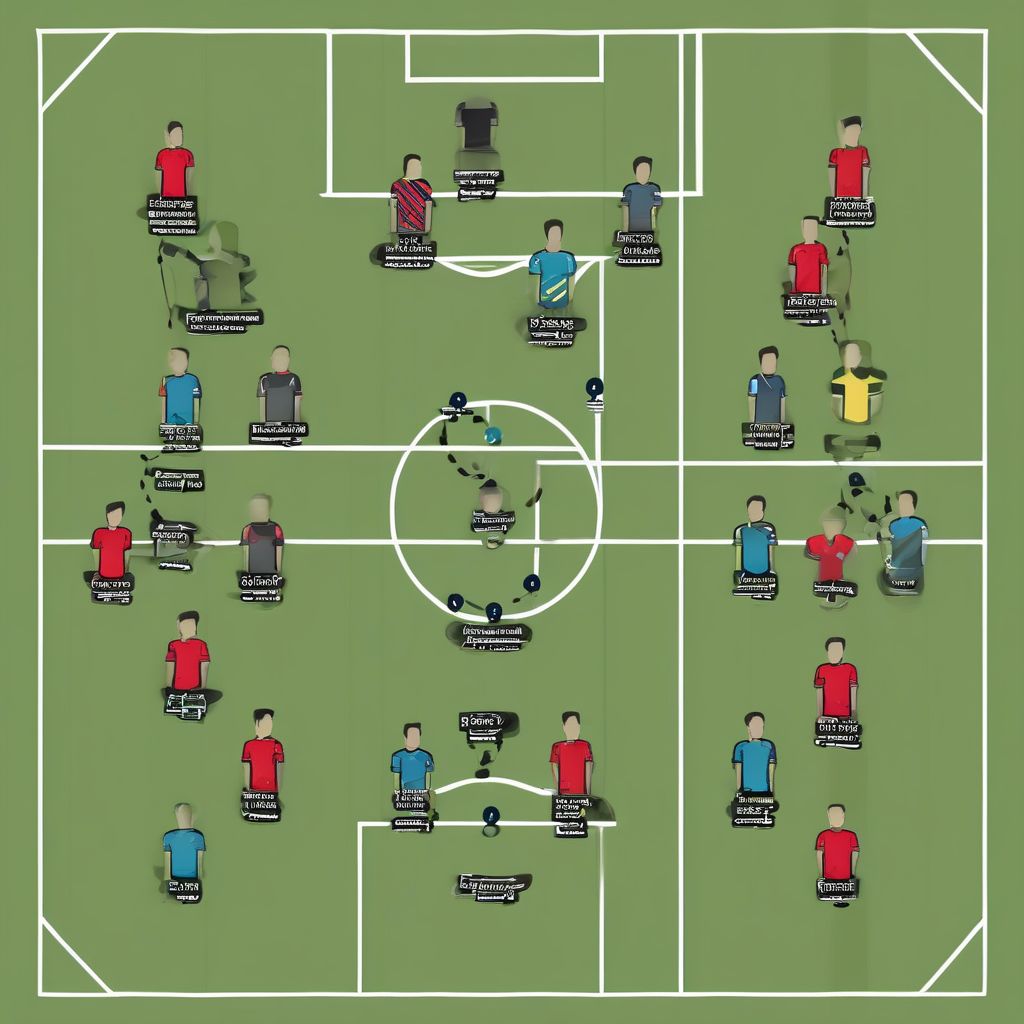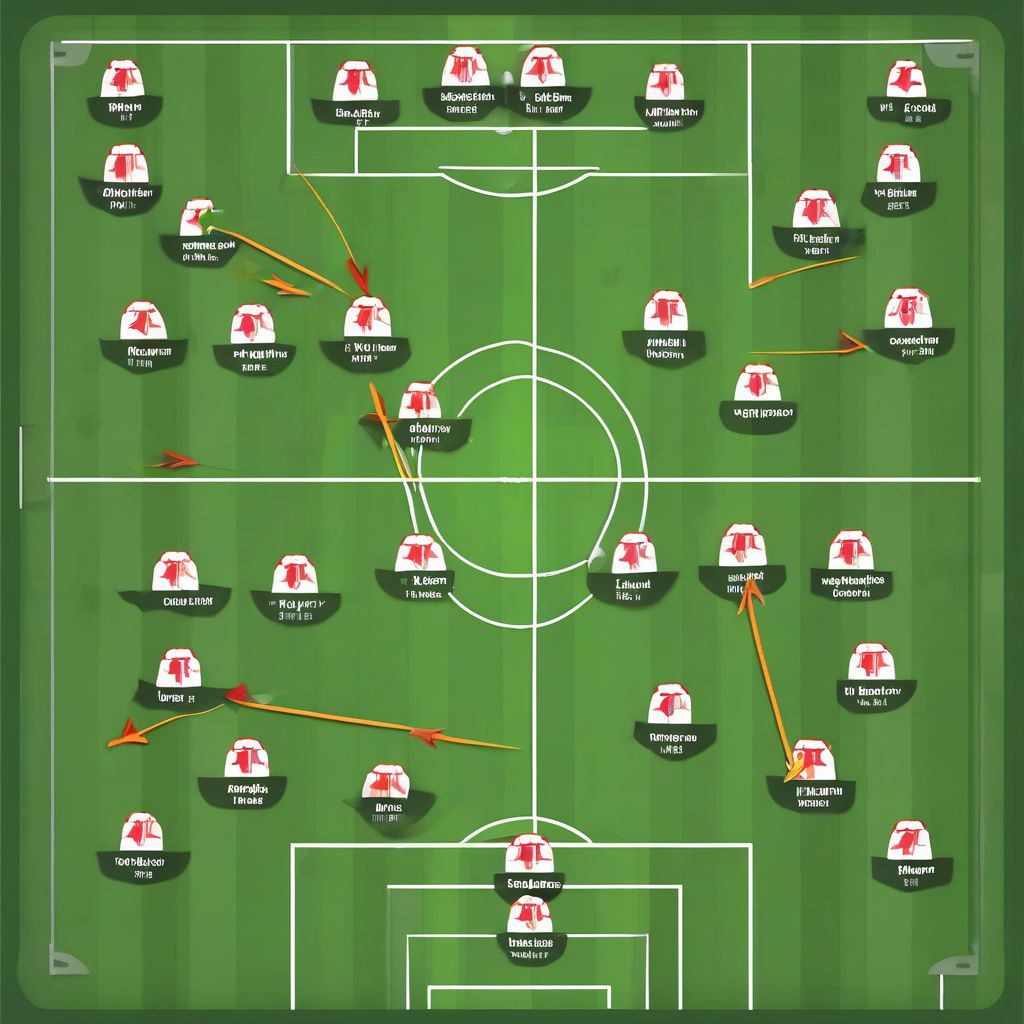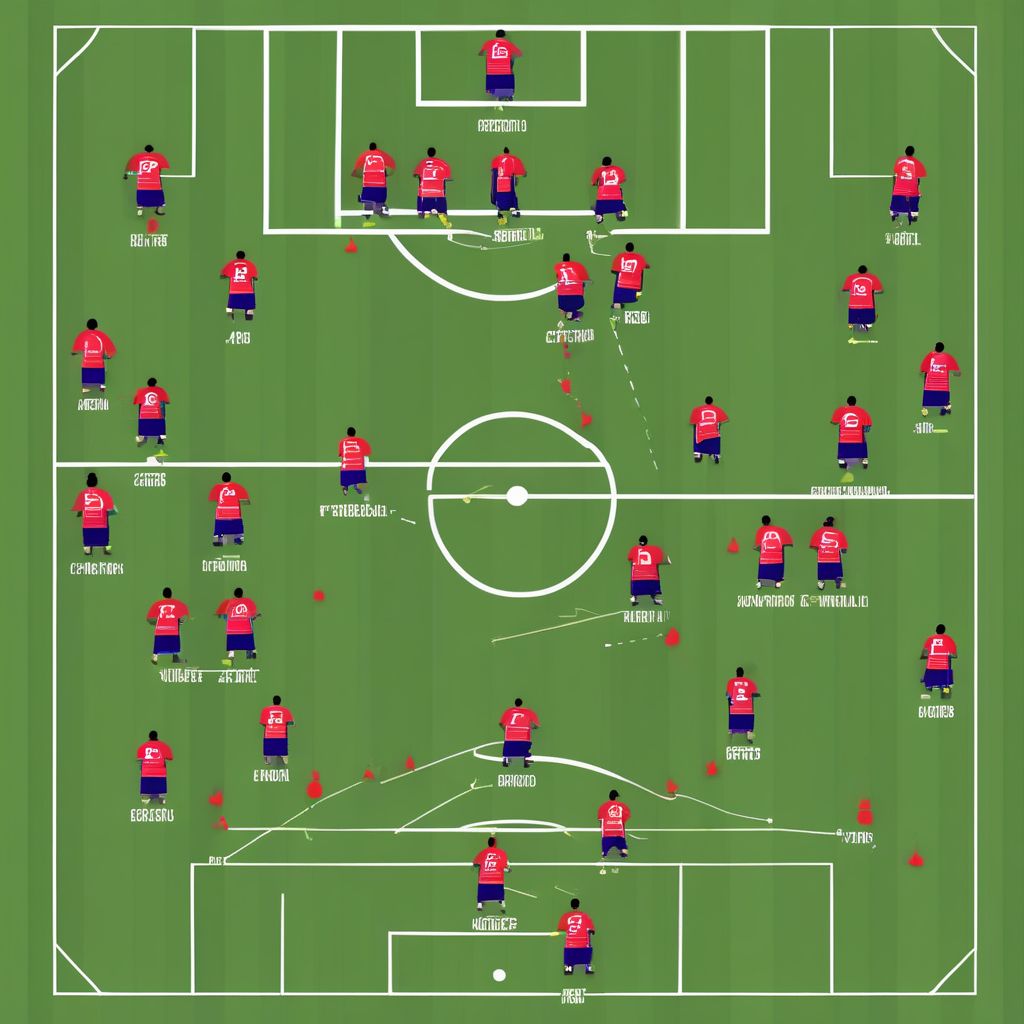Imagine this: the roar of the crowd, the electric atmosphere, two teams locked in a strategic battle for dominance on the pitch. Football, often hailed as “the beautiful game,” is much more than just kicking a ball. It’s a captivating dance of strategy, athleticism, and tactical prowess.
Whether you’re a seasoned fan looking to deepen your understanding or a curious newcomer eager to unravel the intricacies of the sport, this comprehensive guide will delve into the top football strategies and tactics, equipping you with the knowledge to appreciate the beautiful game on a whole new level.
Decoding the Formation: The Foundation of Football Strategy
Before diving into intricate tactics, understanding formations is paramount. A formation dictates the positioning of players on the field, influencing both defensive solidity and attacking potency. Let’s break down some of the most popular formations:
1. 4-4-2: The Balanced Blueprint
 4-4-2 Formation
4-4-2 Formation
This classic formation features four defenders, four midfielders, and two forwards. Its strength lies in its balanced approach, providing a solid defensive structure while offering flexibility in attack.
Strengths:
- Solidity: With four defenders and a compact midfield, the 4-4-2 offers excellent defensive stability.
- Versatility: This formation can easily adapt to both attacking and defensive situations.
- Simplicity: Its straightforward structure makes it easy for players to understand their roles and responsibilities.
Weaknesses:
- Potential Vulnerability on the Flanks: With only two central midfielders, the flanks can be susceptible to overruns by opposition wingers.
- Lack of Creativity in Midfield: Depending on player profiles, the 4-4-2 can sometimes lack a creative spark in the midfield.
2. 4-3-3: Dominating Possession and Attacking Prowess
 4-3-3 Formation
4-3-3 Formation
Favored by teams like Barcelona under Pep Guardiola, the 4-3-3 emphasizes possession-based football and attacking fluidity. With three central midfielders, this formation excels at controlling the tempo and dictating the game’s flow.
Strengths:
- Midfield Dominance: The three central midfielders provide numerical superiority, enabling them to win the midfield battle and control possession.
- Attacking Fluidity: With three forwards and overlapping full-backs, the 4-3-3 offers numerous attacking options and creates overloads in wide areas.
- High Pressing: The formation’s structure facilitates high pressing, forcing opponents into making mistakes and winning back possession quickly.
Weaknesses:
- Defensive Vulnerability in Wide Areas: Overlapping full-backs can leave spaces at the back, making the team susceptible to counter-attacks.
- Reliance on Midfield Trio: The effectiveness of this formation hinges heavily on the chemistry and performance of the three central midfielders.
3. 5-3-2: The Defensive Wall with Counter-Attacking Potential
 5-3-2 Formation
5-3-2 Formation
This formation, with its three central defenders and two wing-backs, prioritizes defensive solidity while remaining a potent threat on the counter-attack.
Strengths:
- Defensive Strength: The three central defenders provide excellent cover and make it difficult for opponents to break through.
- Width in Attack: The wing-backs provide width and attacking options, often launching quick counter-attacks.
- Compactness: The narrow shape of the formation makes it challenging for opponents to create chances through the middle.
Weaknesses:
- Lack of Creativity in Midfield: With only three midfielders, the team might struggle to control possession and create chances against well-organized opponents.
- Limited Attacking Options: The reliance on wing-backs for attacking width can make the team predictable if they are effectively marked.
Beyond Formations: Unpacking Essential Football Tactics
Understanding formations is only the tip of the iceberg. Let’s explore some key tactical approaches that teams employ to gain an edge over their opponents:
1. Possession Football: The Art of Control
Popularized by teams like Barcelona and Spain, possession football emphasizes keeping the ball and dictating the tempo of the game. Through intricate passing sequences and intelligent movement, teams aim to tire out their opponents and create scoring opportunities.
Key Elements:
- Short, Sharp Passing: The ball is moved quickly and accurately, often with one-touch passing, to maintain possession and probe for openings.
- Movement and Interchanging Positions: Players constantly move off the ball, creating space for teammates and confusing defenders.
- Patience and Discipline: Teams are patient in building attacks, waiting for the right moment to strike.
2. Counter-Attacking Football: Lightning-Fast Transitions
Counter-attacking relies on swift transitions from defense to attack, catching opponents off guard. Teams cede possession strategically, luring opponents forward before exploiting the space left behind with rapid breaks.
Key Elements:
- Organized Defense: A solid defensive structure is crucial to win possession and launch quick counter-attacks.
- Pace and Directness: Attacks are characterized by speed and directness, aiming to get the ball forward quickly and exploit any gaps in the opposition’s defense.
- Clinical Finishing: With limited opportunities, counter-attacking teams need to be ruthless in front of goal.
3. Pressing and Gegenpressing: Winning the Ball Back Quickly
Pressing involves aggressively closing down opponents high up the pitch, aiming to win back possession in dangerous areas and create scoring chances. Gegenpressing takes this a step further, focusing on winning the ball back immediately after losing it.
Key Elements:
- Intensity and Stamina: Players need to be incredibly fit and aggressive to execute pressing effectively.
- Coordination and Communication: Defenders and midfielders work in tandem to close down space and prevent opponents from escaping the press.
- Risk Management: While pressing can be highly effective, it’s crucial to manage the risks involved, as leaving gaps at the back can lead to conceding goals.
The Impact of Individual Brilliance: Game Changers on the Pitch
While tactics and formations provide the framework, individual brilliance often makes the difference between victory and defeat. Players with exceptional skills, vision, and tactical awareness can single-handedly change the course of a match.
Conclusion: The Enduring Allure of Football Strategy
Football is a dynamic sport, constantly evolving as new formations, tactics, and approaches emerge. Understanding the intricacies of strategy and the impact of individual brilliance adds a whole new dimension to appreciating the beautiful game. Whether you’re cheering for your favorite team or analyzing a match with a critical eye, the knowledge gained from understanding football’s strategic depths will undoubtedly enhance your enjoyment of this captivating sport.
So, the next time you watch a football match, don’t just focus on the goals. Pay attention to the formations, the tactical nuances, and the individual brilliance that make football a truly captivating spectacle.
- Used Book in Good Condition
- Blank, Dan (Author)
- Latham, Andrew (Author)
- English (Publication Language)
- Latham, Andrew (Author)
- English (Publication Language)
- Jones, Dan (Author)
- English (Publication Language)
- Jones, Robyn (Author)
- English (Publication Language)
- Dugger, Chest (Author)
- English (Publication Language)
- Blank, Dan (Author)
- English (Publication Language)
- Blank, Dan (Author)
- English (Publication Language)
- Cox, Michael (Author)
- English (Publication Language)
- Amazon Kindle Edition
- Wilson, Jonathan (Author)











